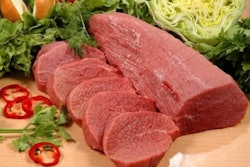Innovation is often equated with new product development, which the pet food industry has excelled at in recent years. If nothing else, pet food companies come out with a lot of new products every year, even if that often means only line extensions of new flavors, formulations and package sizes.
Pet food is not alone in this practice; it’s common to most consumer goods industries. According to Nielsen, innovation investment in consumer packaged goods (which includes most pet foods and treats) is at an eight-year high, and projections show an even higher rate in the number of products being introduced into the market in the next 12 to 24 months. Yet, US consumer sentiment toward new products is relatively low, resulting in an 85% failure rate on the market.
Specific to pet food, new research from Mintel indicates that US consumers are fairly brand loyal and satisfied with the pet food brands they buy; 55% of surveyed pet owners reported being completely satisfied with their current brands. That means experimentation is low, with only 28% of respondents saying they sometimes experiment with other pet food brands. Further, only 20% reported changing brands in the past 12 months.
Note that experimentation may rise, and brand loyalty fall, among Millennial pet owners, who are more likely to use coupons and search for better values in the pet foods and products they buy, according to GfK research.
And, the pet owners surveyed by Mintel also seem to be more willing to try new brands of pet treats; in fact, only 16% feed the same brands of treats as pet food. Perhaps that is one reason pet treats are the fastest-growing segment in the pet food market. That, combined with the fact that treats are easier to develop and market because they have to meet far fewer regulatory requirements than do complete and balanced pet foods, translates into an explosion of new pet treat development—with even more opportunities in terms of cat treats and different shapes and formats for both dog and cat treats.
Yet, is any of this truly innovation? Nielsen just released its 2015 Breakthrough Innovation Report, which claims that so-called breakthrough products close the gap between the “state of knowledge and the state of performance in the practice of innovation” by requiring “every innovation initiative to resolve a poorly performed job in consumers’ lives.”
Nielsen calls this the Jobs Theory, which I at first thought referred to Steve Jobs’ and Apple’s reputation for innovation. But, if you think about it, some of Apple’s most iconic products, such as the iPhone and iPad, also do fit Nielsen’s Jobs Theory. Other examples—new products that Nielsen has proclaimed this year’s Breakthrough Innovation Winners—include Nestlé Purina’s Tidy Cats LightWeight cat litter, Procter & Gamble’s Duracell Quantum batteries and MillerCoors Redd’s Apple Ale.
I didn’t read the description of all the winners (you can download a copy of Nielsen’s report), but the write-up of the Tidy Cat product does encapsulate the Jobs Theory well: “If there’s a single quality that is shared by most of our Breakthrough Winners, it is that they resolve a persistent problem that consumers confront in their daily lives,” the report says. Then it quotes Tidy Cats’ brand director, Rebecca Schulz: “What we’ve heard time and time again is that carrying litter is a burden. In fact, 61% of cat owners indicate that they would readily switch to a lighter brand, as long as there was no compromise in efficacy.”
So, Purina figured out the technical puzzle to making a lighter clumping litter, tested it with cat owners to prove it works and had a winner. Well, at least among some cat owners—not this one, because, though I also find most cat litter heavy to carry, I’m not willing to pay a 50% premium simply for lighter litter.
This is worth keeping in mind in considering the Jobs Theory—or any true innovation—for pet food. While premiumization has driven the growth of our industry for some time now, there is concern that it could be reaching its peak and the price thresholds that most pet owners will bear. I also heard concern during an industry discussion this week that consumers are becoming wise to the marketing claims often made by pet food companies in the race to market the latest natural, “wild,” high-protein, grain-free, gluten-free, “human-grade” pet foods. (One person referred to this marketing practice as “formulation gamesmanship.”)
Add to this the fact that there are only so many new ingredients for our industry to explore and incorporate into formulations, especially for proteins, as we compete with the human food supply. So, where can innovation in pet food take us? Perhaps into completely new formats, some suggest. Or maybe someday, true prescription diets that can legally make drug claims for functional ingredients.
Are there new categories of pet food to be created that resolve “poorly performed jobs” in terms of pet nutrition?

















